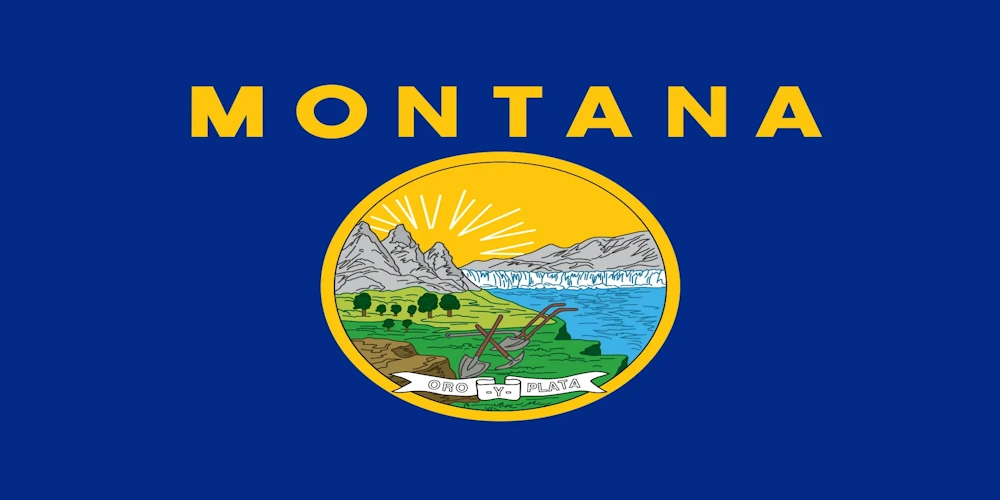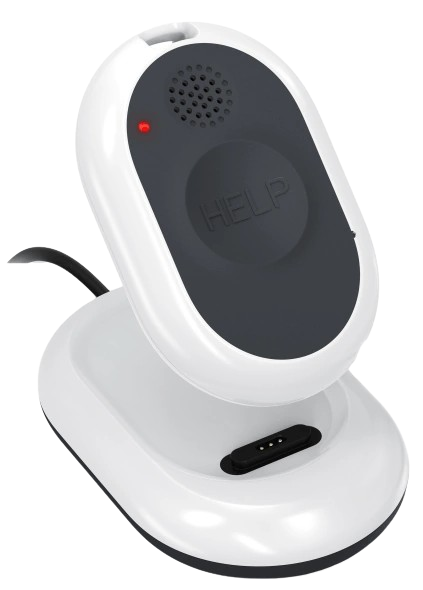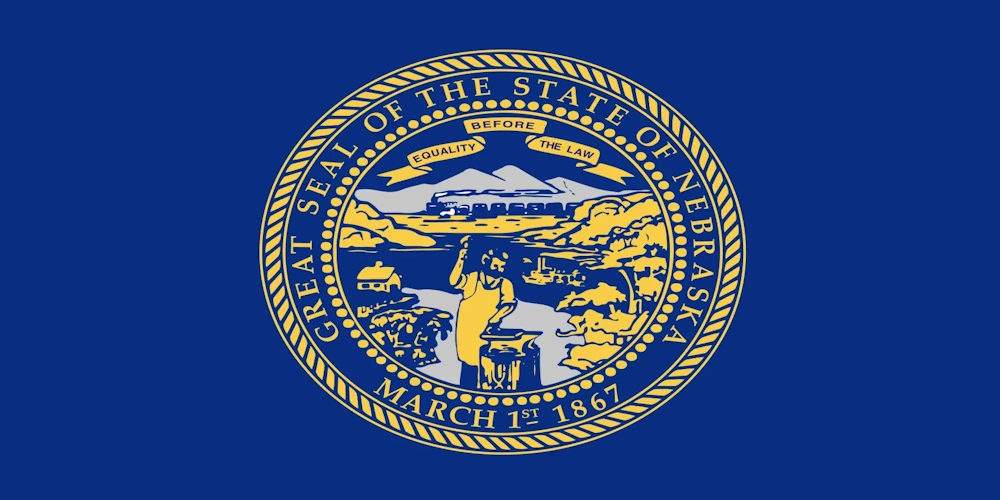Montana’s vast geography and rural industries mean that many employees regularly work alone—in agriculture, oil and gas, forestry, construction, healthcare, and utility services. These lone workers face unique hazards, ranging from environmental exposure to the risk of delayed emergency response. Employers across Montana have a duty to recognize and mitigate these risks as part of their workplace safety programs.
Montana does not operate its own OSHA-approved occupational safety and health plan, which means that all workplace safety enforcement falls under federal OSHA (Occupational Safety and Health Administration). However, employers can also find support through state resources like the Montana Department of Labor and Industry, which promotes worker safety and labor law compliance throughout the state.
On This Page
Our Guide To Lone Worker Safety Policy And Legislation In Montana
Since Montana is under federal OSHA jurisdiction, employers must comply with OSHA’s safety standards, including the General Duty Clause, which requires a workplace free from recognized hazards. While there is no specific OSHA regulation that targets lone workers, employers are still responsible for protecting them through planning, training, and supervision.
The Montana Department of Labor and Industry supports workplace safety through programs like safety consultations, compliance assistance, and public education initiatives. Although these programs do not carry enforcement power like OSHA, they are valuable tools for employers looking to enhance their safety culture.
How Montana Defines A Lone Worker
Montana does not provide a formal definition of a lone worker through its labor regulations. Following OSHA’s framework, a lone worker is considered any employee who performs job duties without close supervision or the presence of coworkers and may face hazards with no immediate assistance available.
Examples of lone workers in Montana include:
- Agricultural workers operating heavy equipment on remote ranches
- Utility and telecom technicians performing field repairs
- Oil and gas industry personnel working at isolated drilling sites
- Environmental scientists and surveyors collecting data off-grid
- Home health aides visiting clients in rural residences
- Night-shift cleaners and security staff working after hours
Recognizing and documenting these roles is the first step toward compliance and prevention.
Employing A Lone Worker In Montana
Montana employers must take proactive measures to protect lone workers through thorough risk assessments and comprehensive safety protocols. In addition to following OSHA requirements, businesses should develop internal policies that reflect the realities of Montana’s geography and industries.
Best practices include:
- Hazard Identification: Analyze job duties for location-specific risks such as wildlife, weather, or machinery use.
- Communication Systems: Implement regular check-ins, emergency communication channels, and fail-safe devices.
- Emergency Response Plans: Create response procedures for injury, illness, or unexpected threats in remote settings.
- Technology Support: Equip lone workers with GPS-enabled devices, panic buttons, or the Safe Lone Worker app.
- Policy Training: Ensure workers understand protocols and know how to activate emergency support if needed.
Employers are also encouraged to explore support from the Montana Department of Labor and Industry, particularly in developing injury prevention strategies and accessing training materials.
Learn How You Can Protect Your Employees With Loneworker.com

With Loneworker.com you can be equipped with the knowledge and the means to protect your employees and protect your business. Contact us today to learn more about how Loneworker.com can protect you and your employees.
How The Safe Lone Worker App Can Protect Montana Lone Workers And Employers
The Safe Lone Worker app is a powerful solution for employers in Montana to protect isolated employees in real time. It features GPS tracking, emergency alerts, timed check-ins, and fall detection, offering peace of mind for both workers and safety managers.
The app is especially valuable for organizations operating in Montana’s more remote areas, where quick emergency access may be limited. By integrating this tool into their safety programs, employers can meet OSHA expectations and support a stronger safety culture.
Montana Lone Worker Policies
Montana does not maintain its own OSHA-approved state occupational safety and health plan. Instead, all workplace safety requirements are enforced by federal OSHA. Employers are required under the General Duty Clause to ensure that lone workers, like all employees, are protected from known hazards.
For the most up-to-date guidance, visit OSHA.gov and erd.dli.mt.gov. This guide is intended for general information and does not substitute for legal or regulatory advice.
Montana Lone Worker Resources
OHS Contact Centre
- 1-866-415-8690
CDC / NIOSH
- 800-232-4636

Affordable Monitoring For Lone Workers In Montana

-
 Monitoring Your Employees' Safety
Monitoring Your Employees' Safety
-
 GPS Tracking And Monitoring
GPS Tracking And Monitoring
-
 Man Down Panic Alerts
Man Down Panic Alerts
-
 24/7 Protection Anywhere
24/7 Protection Anywhere
Lone Worker Legislation
Lone Worker Safety Policies And Legislation By State
-
 Alabama State Safety Policies And Legislation
Alabama State Safety Policies And Legislation
-
 Alaska State Safety Policies And Legislation
Alaska State Safety Policies And Legislation
-
 Arizona State Safety Policies And Legislation
Arizona State Safety Policies And Legislation
-
 Arkansas State Safety Policies And Legislation
Arkansas State Safety Policies And Legislation
-
 California State Safety Policies And Legislation
California State Safety Policies And Legislation
-
 Colorado State Safety Policies And Legislation
Colorado State Safety Policies And Legislation
-
 Connecticut State Safety Policies And Legislation
Connecticut State Safety Policies And Legislation
-
 Delaware State Safety Policies And Legislation
Delaware State Safety Policies And Legislation
-
 Florida State Safety Policies And Legislation
Florida State Safety Policies And Legislation
-
 Georgia State Safety Policies And Legislation
Georgia State Safety Policies And Legislation
-
 Hawaii State Safety Policies And Legislation
Hawaii State Safety Policies And Legislation
-
 Idaho State Safety Policies And Legislation
Idaho State Safety Policies And Legislation
-
 Illinois State Safety Policies And Legislation
Illinois State Safety Policies And Legislation
-
 Indiana State Safety Policies And Legislation
Indiana State Safety Policies And Legislation
-
 Iowa State Safety Policies And Legislation
Iowa State Safety Policies And Legislation
-
 Kansas State Safety Policies And Legislation
Kansas State Safety Policies And Legislation
-
 Kentucky State Safety Policies And Legislation
Kentucky State Safety Policies And Legislation
-
 Louisiana State Safety Policies And Legislation
Louisiana State Safety Policies And Legislation
-
 Maine State Safety Policies And Legislation
Maine State Safety Policies And Legislation
-
 Maryland State Safety Policies And Legislation
Maryland State Safety Policies And Legislation
-
 Massachusetts State Safety Policies And Legislation
Massachusetts State Safety Policies And Legislation
-
 Michigan State Safety Policies And Legislation
Michigan State Safety Policies And Legislation
-
 Minnesota State Safety Policies And Legislation
Minnesota State Safety Policies And Legislation
-
 Mississippi State Safety Policies And Legislation
Mississippi State Safety Policies And Legislation
-
 Missouri State Safety Policies And Legislation
Missouri State Safety Policies And Legislation
-
 Montana State Safety Policies And Legislation
Montana State Safety Policies And Legislation
-
 Nebraska State Safety Policies And Legislation
Nebraska State Safety Policies And Legislation
-
 Nevada State Safety Policies And Legislation
Nevada State Safety Policies And Legislation
-
 New Hampshire State Safety Policies And Legislation
New Hampshire State Safety Policies And Legislation
-
 New Jersey State Safety Policies And Legislation
New Jersey State Safety Policies And Legislation
-
 New Mexico State Safety Policies And Legislation
New Mexico State Safety Policies And Legislation
-
 New York State Safety Policies And Legislation
New York State Safety Policies And Legislation
-
 North Carolina State Safety Policies And Legislation
North Carolina State Safety Policies And Legislation
-
 North Dakota State Safety Policies And Legislation
North Dakota State Safety Policies And Legislation
-
 Ohio State Safety Policies And Legislation
Ohio State Safety Policies And Legislation
-
 Oklahoma State Safety Policies And Legislation
Oklahoma State Safety Policies And Legislation
-
 Oregon State Safety Policies And Legislation
Oregon State Safety Policies And Legislation
-
 Pennsylvania State Safety Policies And Legislation
Pennsylvania State Safety Policies And Legislation
-
 Rhode Island State Safety Policies And Legislation
Rhode Island State Safety Policies And Legislation
-
 South Carolina State Safety Policies And Legislation
South Carolina State Safety Policies And Legislation
-
 South Dakota State Safety Policies And Legislation
South Dakota State Safety Policies And Legislation
-
 Tennessee State Safety Policies And Legislation
Tennessee State Safety Policies And Legislation
-
 Texas State Safety Policies And Legislation
Texas State Safety Policies And Legislation
-
 Utah State Safety Policies And Legislation
Utah State Safety Policies And Legislation
-
 Vermont State Safety Policies And Legislation
Vermont State Safety Policies And Legislation
-
 Virginia State Safety Policies And Legislation
Virginia State Safety Policies And Legislation
-
 Washington State Safety Policies And Legislation
Washington State Safety Policies And Legislation
-
 West Virginia State Safety Policies And Legislation
West Virginia State Safety Policies And Legislation
-
 Wisconsin State Safety Policies And Legislation
Wisconsin State Safety Policies And Legislation
-
 Wyoming State Safety Policies And Legislation
Wyoming State Safety Policies And Legislation
-
 American Samoa State Safety Policies And Legislation
American Samoa State Safety Policies And Legislation
-
 Guam State Safety Policies And Legislation
Guam State Safety Policies And Legislation
-
 Northern Mariana Islands State Safety Policies And Legislation
Northern Mariana Islands State Safety Policies And Legislation
-
 Puerto Rico State Safety Policies And Legislation
Puerto Rico State Safety Policies And Legislation
-
 Washington D.C. State Safety Policies And Legislation
Washington D.C. State Safety Policies And Legislation
-
 Virgin Isles State Safety Policies And Legislation
Virgin Isles State Safety Policies And Legislation







